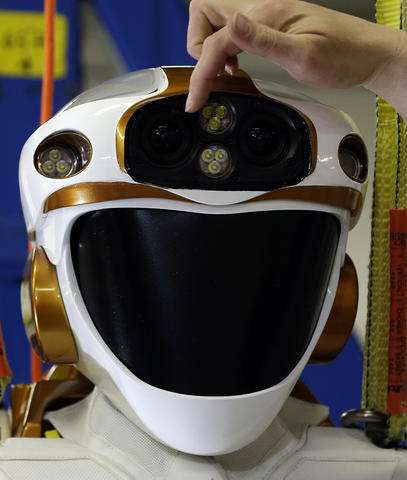
Four sister robots built by NASA may soon end up as on-ground probe explorers for the colonization of Mars, forming an advance construction team that will develop a habitat for more fragile human explorers. Engineers are fine-tuning the robots before they venture into the unknown.
While one Valkyrie robot remains at the Johnson Space Center in Houston, three others have ended up at universities in Massachusetts and Scotland for professors and students to humanize them. At six feet tall and 300 pounds, each of the humanoids must become more autonomous.
NASA originally designed Valkyrie to compete a disaster-relief robotics contest hosted by DARPA, but the model has since found another purpose – space exploration. Residing at the University of Massachusetts-Lowell, the Massachusetts Institute of Technology, and the University of Edinburgh, the Valkyrie robots still have their flaws, such as the possibility of their ventilation holes getting clogged by spiraling Martian dust. Scientists still have time to resolve these malfunctions, as NASA does not plan to land humans on Mars until the mid-2030s.

Until then, researchers must build the computer code that will improve robots’ practicality in hostile environments. “It needs to be able to communicate back to Earth, very clearly and concisely, what’s going on,” said Holly Yanco, a computer science professor and director of UMass-Lowell’s robotics center. A time delay between communications from Earth to Mars renders humans unable to remotely control robots needed to build structures and make repairs. NASA’s robotic rover Curiosity, which landed on Mars in 2012, experienced a delay of 13 minutes and 48 seconds during its EDL, but a maximum delay of about 24 minutes is also possible.
According to Robert Platt, an assistant professor at Northeastern University who has contributed to this research through a partnership with UMass-Lowell, Valkyrie’s skills are far beyond that of Curiosity. “The rovers get their instructions uploaded at the beginning of the day,” he said. “Those instructions amount to, ‘Go over there,’ or ‘Check out that rock.’ It’s a completely different ballgame when the job for the day is to assemble a couple of habitats.”
Both Valkyrie and Curiosity are descendants of Opportunity, which landed on Mars in 2004 with the mission to find signs of water activity. Its mission partner, Spirit, stopped its communication with Earth in 2010 and was officially declared inactive a year later, but Opportunity is still exploring the territory, paving the way for these updated models.
Valkyrie’s ability to perform more advanced tasks is expected to improve as more technological developments occur. “Robotics has been making tremendous strides in the past five years,” said Platt. “It’s one of those situations where you work on the same problem for decades and decades, and something finally starts to happen. Maybe this is that time.”
Advertisement
Learn more about Electronic Products Magazine





